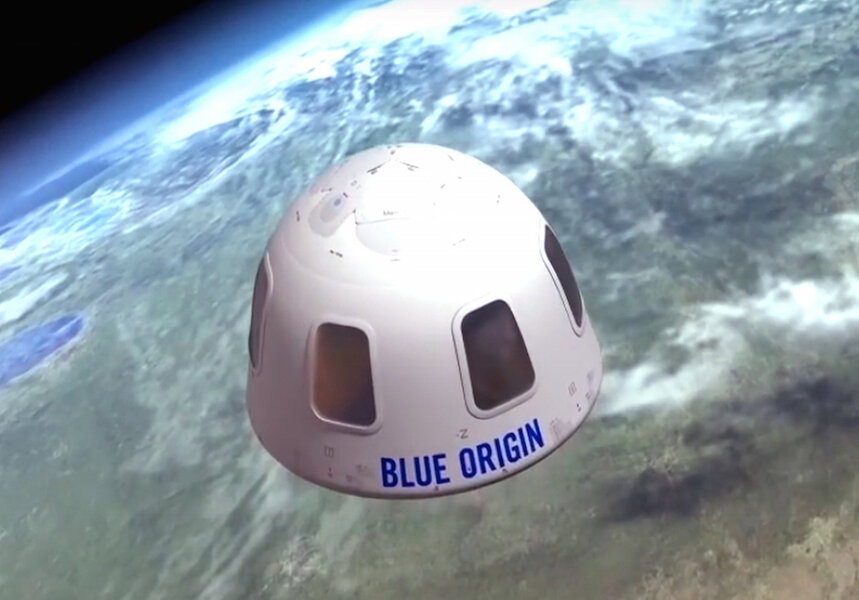How Blue Origin plans to soon send people into space, safely
Loading...
Blue Origin could soon be taking checks from customers who want to travel to space.
On Tuesday, founder Jeff Bezos announced a new timeline for the Blue Origin’s plans to send paying customers into space: manned test flights by 2017 and commercial flights in 2018. The announcement came during a four-hour tour for reporters around the company’s headquarters in Kent, Washington.
The timeline arrives weeks after Virgin Galactic unveiled its newest spacecraft, Virgin Space Ship Unity, at a flashy launch event. Virgin Galactic, backed by fellow billionaire Richard Branson, is Blue Origins biggest competitor in the space tourism industry.
While competition between Virgin Galactic and Blue Origin, as well as other companies, may indicate a new, private-sector space race, Mr. Bezos said he’s in no rush to be first.
“I want us to be safe. If we end up being first that would be fine. But that’s not the goal,” Bezos told The Washington Post during the headquarters tour. Before putting people into the rocket, Blue Origin will “... test the every living daylights out of this thing,” Bezos added.
Safety has become a major concern for both Virgin Galactic and Blue Origin following a fatal 2014 crash of a Virgin Galactic spacecraft during a manned test flight. The flight led to the death of one pilot and severe injuries for another. It also opened up concerns over how safe commercial space flight could really be.
Virgin Galactic Space Ship Unity features additional small changes to improve safety, The Christian Science Monitor previously reported. The cause of the crash was found to be a piloting error and the additions to safety make it harder for future pilots to make similar mistakes.
Blue Origin’s plan to ensure its autonomous New Shepherd spacecraft is safe involves an ample amount of testing and reuse.
The current New Shepherd has so far completed three flights. The first, in April 2015, took it up to 58 miles above the ground, just short of the Karman Line, the most commonly used marker for the edge of space, 62 miles above the ground. A second launch took it past the the Karman Line in November 2015. The spacecraft’s third launch took it into space a second time in January 2016 and performed a successful landing, proving reusability.
Blue Origin will test the current New Shepherd until it is no longer reusable and then shift to a new model that will allow test pilots to accompany the craft in its ascent, according to the Seattle Times. The shift to manned test flights should take place before 2017.
If all goes well, Blue Origin could begin taking paying customers up to space in 2018.
How much those customers will be paying and when exactly they launch is still unknown. Bezos has yet to start taking reservations for paying customers. In contrast, Virgin Galactic has a list of customers with reserved seats, notably including theoretical physicist Stephen Hawking. Seats go for $250,000 on Space Ship Unity.
Bezos was also reluctant to say how much he has spent on developing his rocket company. He told reporters, “Let’s just say it’s a lot.”
“I never expected to have the resources to start a space company,” he said to The New York Times. “I won a lottery ticket called Amazon.com.”






